
UPDATED ✅ Do you need to configure the battery saver on your Windows 10 PC and don’t know how? ⭐ ENTER HERE ⭐ Find out how to do it ✅ EASY and FAST ✅
When it comes to a laptop very few times we are aware of the care of the battery and its useful life, At most, we are only waiting for it not to reach zero, and when it reaches the top, we disconnect the load to avoid saturating it too much.
But there are ways that can help enhance both the battery life of your computer, as well as its short-term and long-term energy performance.
That is why it is important that we know about power saver in windows 10, how to activate and deactivate it properly. Well it is important to configure our energy plan to extend the life of the battery a little more.
What plans does power or battery saving have in Windows 10 and how to configure it correctly?
energy saving for computers it is an idea brought from smartphones and tablets to fulfill the function of conserving energy and avoid the loss of information of this in a sudden blackout of it.
This function it is designed for laptops, since in a desktop computer this function would not make any sense.
But this function goes beyond simply activating when the battery reaches 30% or 20% depending on your device, because in this we have the possibility to choose each of the actions that will be carried out each time the battery saving is activated.
- First we must access power optionsfor this we will go to the lower right corner of the screen, right clicking on the load icon and then clicking on “Energy options”.

- Next, a screen similar to the one in the image below will appear, where it shows us the different plans that we have at our disposal and which of them is activated.

Now we will see what are the main characteristics of these energy saving plans for our PC, their advantages and disadvantages, we will see:
Saver Plan
The saver plan is the best plan for the long-term care of our battery, because if there is something that we all know, it is that the batteries of our electronic devices are not eternal, and whether it is a mobile phone or a laptop, they will always have an expiration date.
The main characteristic of this plan is that when the computer is not connected to its corresponding power source, screen brightness is decreased to a little less than half. Also this will make it turn off after 2 minutes of not using the computer, or that it is completely suspended after just 10 minutes without even moving the PC mouse.
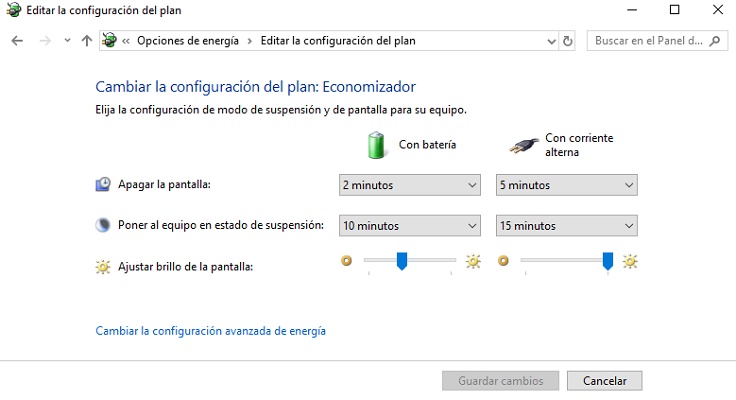
This plan can be very useful prevent the battery from wasting more than 10 minutes, thus protecting its useful life over the years. It is excellent because if one day we are very busy and for some reason we leave the house or office without turning off or lowering the computer screen, we can be sure that the battery will be safe, along with our documents and important information.
Although it is important to clarify that the economizer plan can be a bit disadvantageous when it is required that the computer of all its energy performance, either for the development of a project or any activity that requires all its power.
Balanced Plan
This is the most recommended plan both by users and by Microsoft people themselves. Because it is responsible for correctly balancing the use of energy between the different hardware components of the computer.
Its main characteristics are that the computer you will be disconnected from your glow power source, which is part of the screen hardware and is one of the components that the PC consumes the most, which will make it smaller up to 50% of your total.
Likewise, the duration of the screen without touching the computer increases to 5 minutes until it turns off. The complete suspension of the computer occurs after the 15 minutes have passed.
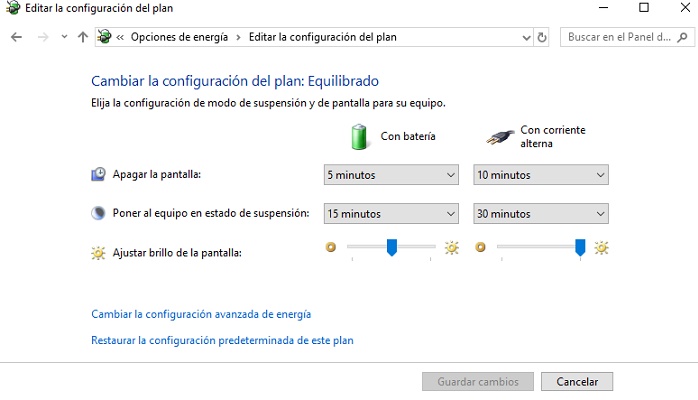
This is a good plan provided by Windows, because thanks to it, the computer finds a good balance between long-term battery care and good activity performance that require more energy than normal from it.
High Performance Plan
This is the third plan provided by the Windows system, is perhaps the one with which we have to be most careful when implementing it, because an abuse of energy could lead to a noticeable decrease in battery life in the long term.
The main characteristics of this plan are that when the computer is working only with the battery never sleep completely, so only the screen will turn off after 10 minutes without touching a key or moving the mouse and the brightness goes to the lowest to try to gain more loading time.

The good thing about this plan is that our computer will have all the energy available to give a good performance in any activity that requires large amounts of energy. Example: renders of large videos or other activities such as programming or design.
The disadvantage is that If one day we go out and leave the computer on and without being connected to the charger, when we return we may find the computer turned off with zero battery and we will probably have lost the progress made that has not been saved.
It should be noted that all the configuration of the plans seen above is the default by the system. Although they can be modified by us at any time by simply clicking below where it says “Change advanced power settings.”
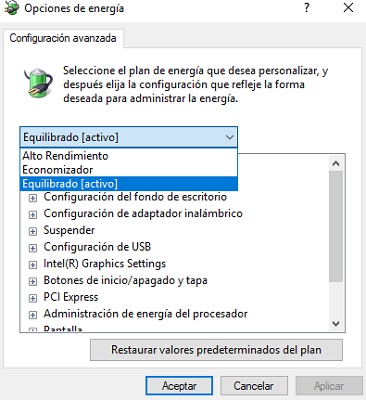
These options can be found at the top of the menu of all existing plans. Down we can configure each of the specific parameters. But only in very specific cases, for the rest it is advisable to leave it that way.
How to create custom power plans in W10?
- As we can create our own power plans from the main menu, clicking on the option “Create a power plan.”
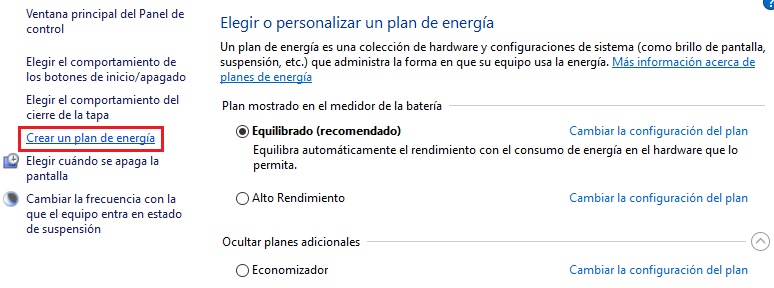
- After We choose the name of the plan and its modality. Finally we configure it with our preferences.

Steps to remove power saving mode in Windows 10
The Windows 10 operating system apart from the power plans that we already met in the previous point, there is also a function called “Energy saving” which decreases the capabilities of the equipment in order to lengthen the battery. This function is activated automatically when the battery of the device is below 30 or 20 percent.
But if your computer is a desktop computer, possibly it does not have a battery and maybe you would like to disable this function of your system, and even if it is a computer with a battery, If you need to remove this option below are the steps.
- To be able to deactivate it, we must first click on the load button with the left click and then on “Battery Settings”.
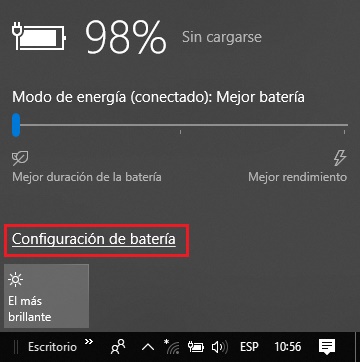
- In the options screen that opens we must deactivate the alternative that says “Automatically activate battery saver if the battery level is lower than”, We will deactivate it by unchecking it.
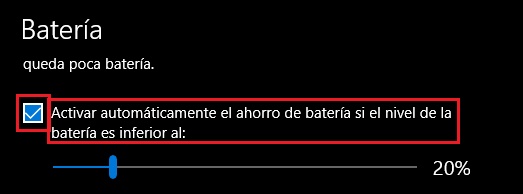
Operating systems